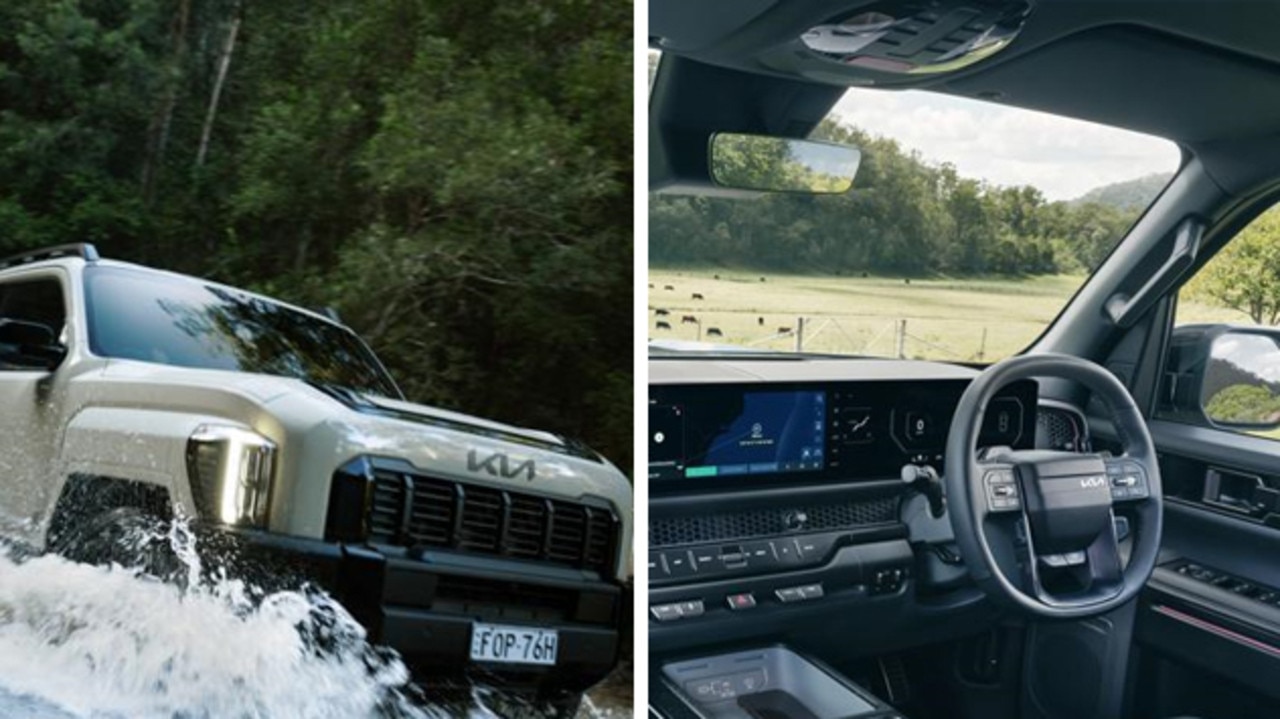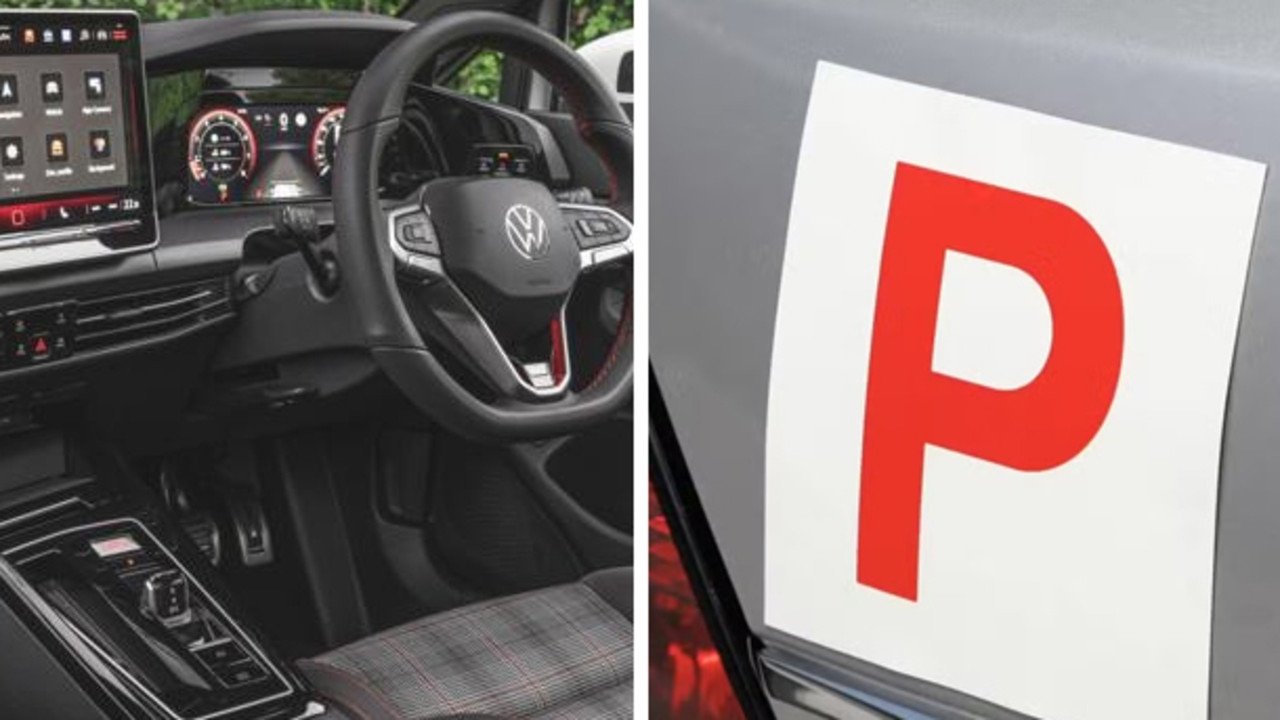2023 Hyundai Kona new car review
The popular car brand has launched its all-new small SUV that brings improvements in nearly every department. Here is everything you need to know.
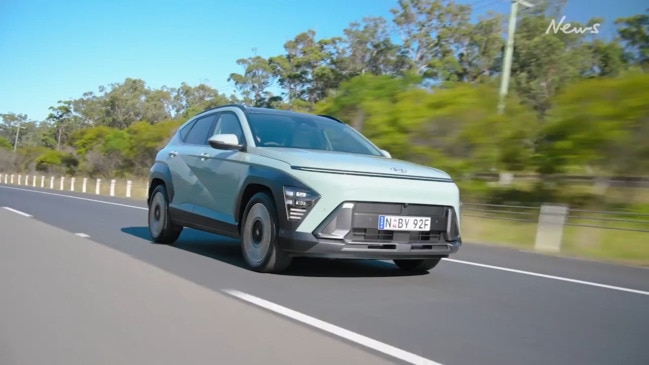
New Cars
Don't miss out on the headlines from New Cars. Followed categories will be added to My News.
The new Hyundai Kona isn’t just a futuristic-looking car.
It represents the future for Hyundai, a car that is likely to overtake – or even replace – the i30 hatchback as the brand’s small-car option in Australian showrooms.
The Kona range has something for every taste, offering a choice of petrol, turbo, hybrid or electric power.
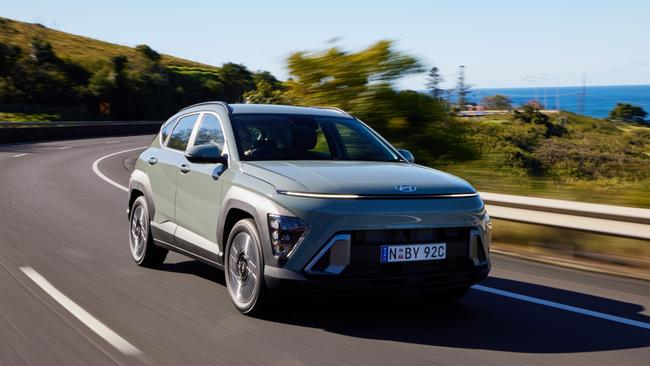
The new model is wider, taller and almost 15 centimetres longer than the outgoing car, with a bigger body that wears eye-catching looks described by Hyundai as a “dynamic wedge” with razor-thin lights at the front and rear.
The bigger body helps Hyundai justify a significant price rise. At $32,000 plus on-road costs (about $36,000 drive-away) for a basic petrol version, the new-look Kona costs about $5000 more than before.
A new hybrid model will cost $36,000 plus on-road costs (about $40,000 drive-away) when it arrives towards the end of this year. A battery-powered Kona Electric will follow the hybrid into showrooms a little later in the year, but there won’t be a successor to the high-performance Kona N.
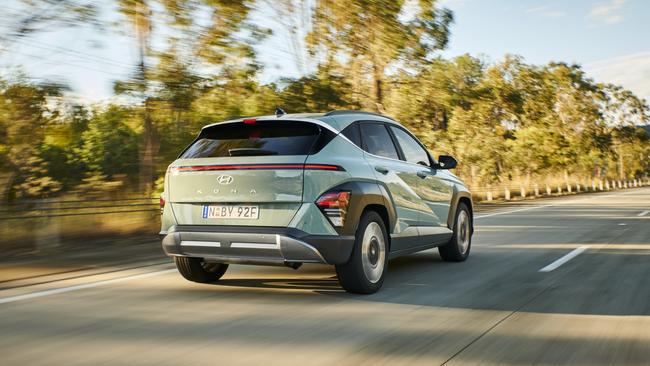
Instead, folks who want a fast Kona will need to make do with turbocharged N-Line models that have a body kit, 19-inch alloys, and a sporty interior for $40,000 plus on-roads (about $44,000 drive-away).
The Kona’s modern looks extend to a fresh cabin with a floating dashboard home to twin 12.3-inch digital displays delivering smartphone mirroring for Apple and Android devices.
A $3500 premium pack brings extra gear including a 360-degree parking camera, and a blind-spot viewing system that plays a live video feed on the digital dash.
It also has an eight-speaker Bose stereo, powered tailgate, ambient mood lighting and leather seats that are heated in the front and rear.
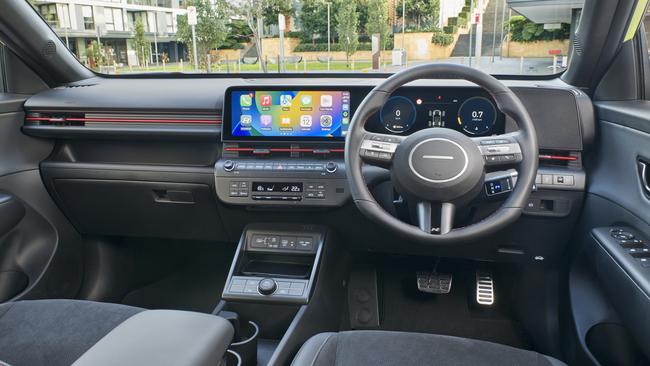
The Kona is much roomier than before, particularly in the back seat, where it is almost on par with vehicles the next size up.
The same goes for a significantly larger boot and a comprehensive array of safety gear that includes a new front-centre airbag that helped earn a five-star safety rating.
Driver aids include front and rear auto braking, active cruise control, lane keeping assistance and blind-spot monitoring, plus a speed-sign recognition system that displays prevailing speed limits on the dashboard and chimes loudly if you exceed it, even by a little.
The cheapest Kona has a carry-over 2.0-litre naturally aspirated engine that uses 6.6L/100km to send 110kW and 180Nm to the front wheels through a CVT auto.
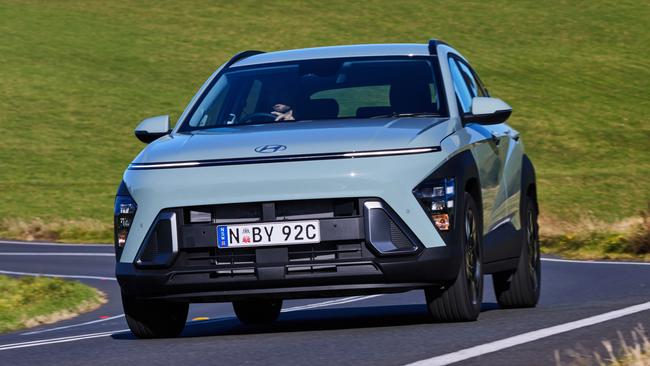
Turbo models have a boosted 1.6-litre engine that uses 7.6L/100km to produce 146kW and 265Nm. Power is delivered to all four wheels through a new eight-speed automatic transmission that replaces a dual-clutch auto in the old car.
The new 1.6-litre hybrid version sips just 3.9L/100km while producing 104kW and 265Nm, driving the front wheels through a six-speed dual-clutch auto.
We tested the standard 2.0-litre and 1.6-litre turbo models at the model’s national launch in New South Wales. Both models have sweet steering and powerful four-wheel disc brakes, but non-turbo models have simple torsion beam suspension that struggles to deal with broken surfaces.
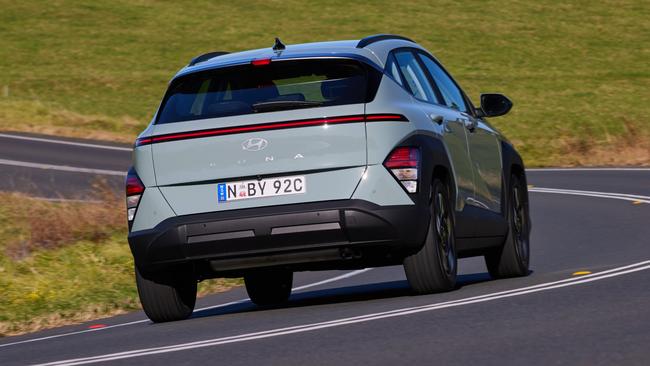
The standard engine works hard to deliver its best and needs revs on board to deal with hills or overtaking manoeuvres.
But that’s not the case for the turbo, which delivers quietly effortless punch that has no problem handling big throttle inputs. All-wheel-drive traction makes for seamless progress, and the conventional auto is a fine replacement for the old car’s occasionally grabby dual-clutch transmission.
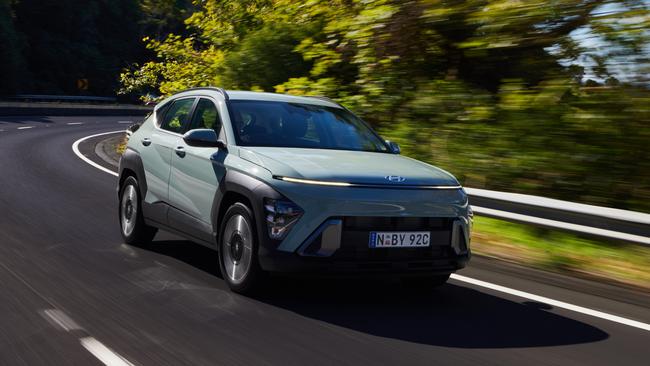
The turbo’s multi-link suspension does a much better job of handling imperfections in the road, despite wearing low-profile 19-inch alloys with wider tyres.
Aerodynamic tweaks help make both cars quieter on the highway, reinforcing the overall impression that the new Kona is a grown-up machine.
VERDICT 4/5
Bigger and better than before, the new Kona justifies its price premium, but customers might be better off waiting for the new hybrid model.
2023 HYUNDAI KONA
PRICE: From about $36,000 drive-away
ENGINE: 2.0-litre 4-cyl, 110kW and 180Nm
WARRANTY/SERVICE: 5-yr/u’ltd km, $1995 for five yrs
SAFETY: Seven airbags, front and rear auto emergency braking, active cruise control, lane-keep assist, blind-spot monitoring, rear cross-traffic alert
THIRST: 6.6L/100km
BOOT: 407 litres
SPARE: Space saver
Originally published as 2023 Hyundai Kona new car review

